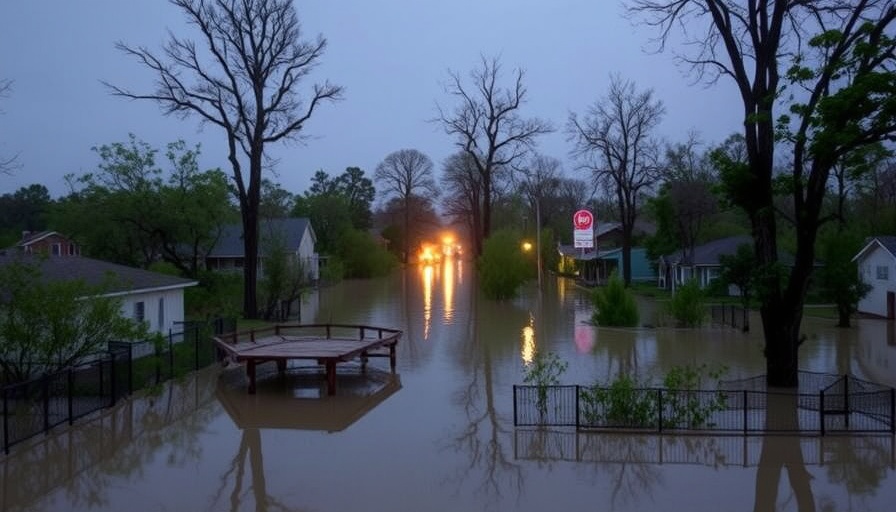
Unfolding Tragedy: The Impact of Central Texas Flooding
As Central Texas grapples with a catastrophic flood, the suffocating reality of a natural disaster is hitting home. The tragic death toll has now reached at least 111, including 30 children, with 173 individuals still missing as search and rescue teams work tirelessly in devastated areas like Kerr County. Governor Greg Abbott has acknowledged the massive efforts needed to locate those unaccounted for and bring comfort to the grieving families impacted by this disaster.
The Heartbreaking Recovery Efforts
The rescue operations primarily focus on areas that have been significantly affected along the Guadalupe River corridor. Most notably is Kerr County, where rescuers are searching for a counselor and five girls who disappeared after the deadly flash floods inundated Camp Mystic, a summer camp known for its serene environment that turned into a tragedy. The recovery mission has found the bodies of seven North Texas girls, and the community's heartache is palpable with every life lost.
Connecting Community Resources to Recovery
In response to this dire situation, state officials and local organizations are working together, urging citizens to offer assistance. Kerr County Sheriff Larry Leitha emphasizes that the Community Foundation of the Texas Hill Country has set up a relief fund, ensuring that contributions directly support local organizations actively working on recovery efforts. For many in the region, this is a critical lifeline.
Lessons from the Flooding Crisis
Flash floods are a stark reminder of the unpredictability of nature. As climate change becomes an ever-growing concern, understanding factors contributing to such disasters is essential in preparing for the future. The current floods should invoke discussions on infrastructure resilience and emergency preparedness within local government frameworks, as seen in Dallas and other rapidly urbanizing areas facing similar risks.
Public Safety Insights: What Can Be Done?
This disaster highlights ongoing challenges in public safety protocols and response mechanisms when faced with extreme weather events. As Dallas deals with its own demands for robust infrastructure and emergency services, community engagement becomes critical. The Dallas city government needs to prioritize maintenance and improvement plans that accommodate rapid population growth and protect residents from potential flooding disasters.
Future Predictions: Preparing for Climate Adjustments
The current flooding gut-punches central Texas, spurring predictions of more frequent and severe weather patterns nationally. We must reconsider urban planning and community readiness to mitigate the effects of disasters like these. Local governments, including Dallas' city council, may need to address climate resilience in their policy-making and resource allocation for emergency preparedness.
Calls to Action: Your Role in Recovery
While the state and local communities join forces to navigate through recovery, citizens across Texas can take action. Whether by donating to the American Red Cross Disaster Relief or contributing to local foundations supporting flood victims, every act of kindness maters. In the wake of this disaster, we are reminded of our shared humanity, and the need to come together during tough times.
In summary, the flooding crisis in Central Texas not only represents a moment of extreme loss but also ignites discussions about the resilience and preparedness of communities facing climate adversities. Understanding the intricate dynamics of such disasters can lead to significant changes that aim to protect future generations.
 Add Element
Add Element  Add Row
Add Row 



Write A Comment